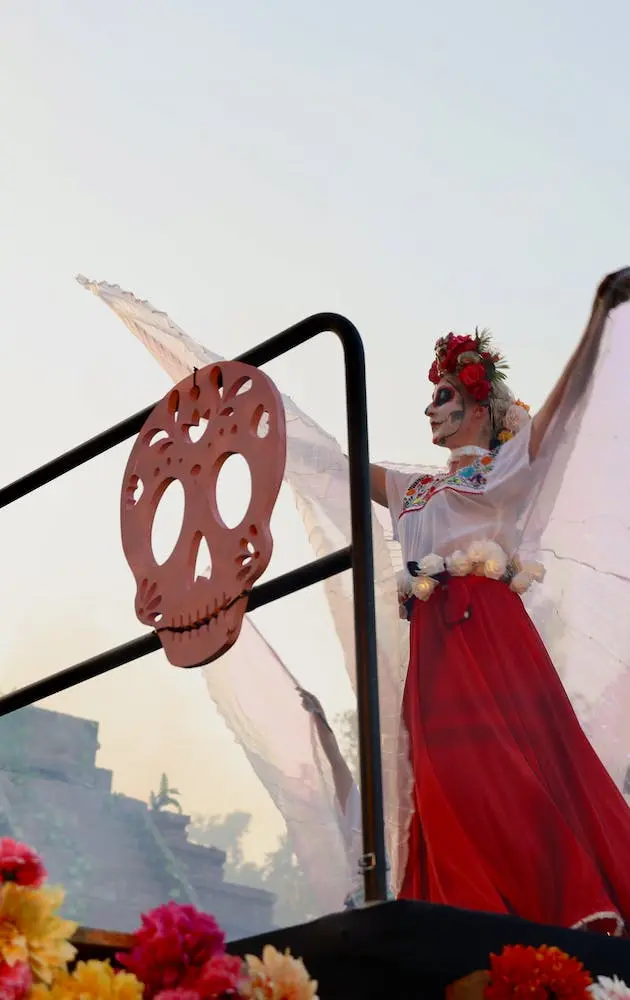Day of the Dead around the world
- Dulce Carranza

- Nov 8, 2023
- 3 min read
Although originally only celebrated in four countries (Mexico, Guatemala, Bolivia, and El Salvador), with the constant cultural exchange that evolves over time, bringing traditions to new places, the Day of the Dead has become increasingly popular worldwide.
While some say that its spread was largely achieved through the marketing strategy for Coco and James Bond, Mexicans living in other countries have made efforts to promote this celebration by setting up altars or holding processions that have garnered more attention.

The Day of the Dead, celebrated on November 1st and 2nd each year, originates from a pre-Hispanic tradition in which, in order to guide the souls of their deceased during their journey to Mictlan - which means "place of the dead" in Nahuatl - communities organized parties and created colorful altars with copal incense.
Currently, it is also said that regardless of the time that has passed since the person's death, they have "permission" to see their family members again during the festivities, and according to popular belief, the visit of the deceased can bring prosperity.
Over the years, and with the arrival of the Spaniards in Mexico, the culture merged, and currently, the offerings have more elements from the original ones, such as candles and crosses, as well as visits to cemeteries.
In 2003, the Day of the Dead was declared an Intangible Cultural Heritage of Humanity by UNESCO, and in 2008, it was officially inscribed on their list.
It has reached every corner of the world
In 2023, the Day of the Dead reached various parts of the world with events organized by Mexican embassies but also by Latin American communities.
The Jardin de l'Acclimatation in Paris, France, hosted several altars and folk ballet performances to celebrate this tradition from mid-October to November 12th.
There were also mariachi shows, marigold flowers, Mexican food stalls set up by entrepreneurs, artists offering catrina makeup, and even a "Mayan maze."
Foto 1: Cortesía de Tequila Casa Dragones | Foto 2: Mexican Comunity in Cork | Foto 3: Sitio web Jardin d'Acclimatation
Meanwhile, in North American cities like New York, USA, due to the high number of Latin American citizens, parades and catrinas were not far behind.
However, the most impressive was the mega-offering placed at the foot of Rockefeller Center as part of "Mexico Week."
In Helsinki, Finland, they created an exhibition titled "Day of the Dead Altar," which was available to the public from October 28th to November 5th at the Oodi hall, located in the central library of the Finnish capital.
Under the direction of Mexican designer Julio Orduña, a digital art projection called "Papel Picado" was made, the movie Coco was presented to engage children, and workshops on how to create your own altar were opened.
The Mexican Community in Cork, Ireland, brought together the entire community, including local schools, to set up an altar dedicated to Selena, in this case emphasizing the empowerment of Latina women.
Belgium, Italy, and Spain in their respective capitals had parades with "mojigangas" (huge catrinas with big heads) and the traditional stands with tacos and "pan de muerto" (bread of the dead).
In Germany, cities like Hamburg, Berlin, and Stuttgart were filled with altars, music, and workshops in cultural centers like the Humboldt Forum in the capital, where you could taste traditional "pan de muerto," and entrepreneurs offered their crafts.
The Friedhof Ohlsdorf cemetery in Hamburg donned Mexican colors on November 4th with the "Day of the Dead" event, featuring music, dance, traditional food, and an altar dedicated to all the deceased resting in one of Europe's largest cemeteries.










Comments